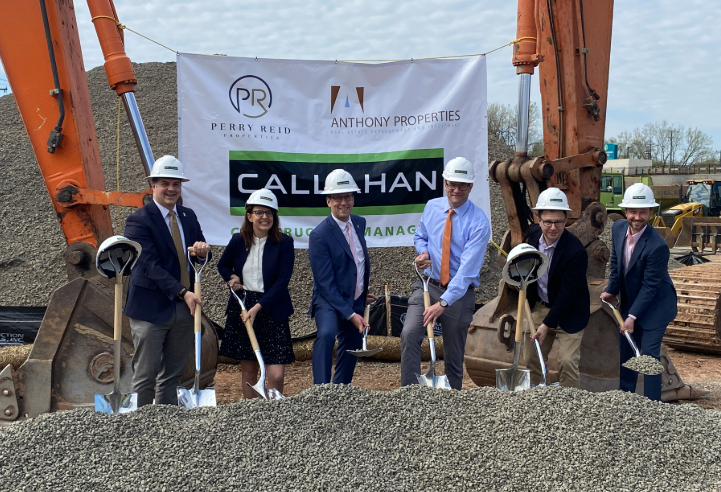News: Connecticut
Posted: October 15, 2008
IREM's Income/Expense Analysis: Office Bldgs. reports modest change
Total collections for suburban office complexes nationwide in 2007 dipped less than 1% from 2006 levels to $19.31 per s/f of net rentable area, whereas those for downtown properties increased 3.1% to $19.85 per s/f. Total actual collections for downtown properties were 2.8% more last year than their suburban counterparts.
These are among the major findings reported in the 2008 edition of the Income/Expense Analysis: Office Buildings, a new benchmarking study published by the Institute of Real Estate Management. This annual research study, conducted by IREM since 1976, analyzes operating income and costs for 1,549 private-sector office complexes - some containing multiple buildings - in major metropolitan areas and regions in the United States. It is designed to help property owners, managers, investors, appraisers, lenders, developers and other real estate professionals evaluate their buildings' performance and prepare budget and revenue projections, feasibility studies, etc.
TOTAL OPERATING COSTS RISE MODESTLY
Total operating costs for suburban buildings in 2007 rose just 2.1% from the prior year to $8.47 per s/f, while operating costs for downtown properties increased 6.6% to $9.43 per s/f of rentable area.
Nationally, net operating costs for suburban buildings increased a slight 2.8% to $6.19 per s/f in 2007 vs. 2006, whereas those for downtown properties increased 3.9% to $6.90 per s/f.
KEY EXPENSE COMPARISONS
All major expense categories for suburban properties rose last year except for janitorial/maintenance costs which remained the same. Insurance costs saw the largest increase, 7.7%, followed by real estate and other taxes, up 4.7%, utility costs up 3.1%, and administration/benefits costs up a slight 0.9%.
Similarly, all major expense categories for downtown properties increased except for insurance costs, which remained the same. Utility costs increased 3.4% in 2007 vs. 2006, janitorial/maintenance costs increased 2.8%, and administrative/benefits costs increased 1.8%.
Focusing again on major expense categories, but as a percentage of total operating costs, the IREM study reveals that suburban properties spent 24.9% of their operating budget on janitorial/maintenance services, 23.8% on utility costs, 23.5% on real estate and other taxes, 13.2% on insurance services, and 12.9% on administrative/benefits costs. Similarly, expenditures for janitorial/maintenance services accounted for the largest chunk of downtown properties' operating budgets, 26.9%, followed by 24.7% spent on real estate and other taxes, 22.7% spent on utilities, 12.7% spent on insurance services, and 12.2% spent on administrative/benefits.
Overall, suburban properties proved 10.2% less costly to operate in 2007 than their downtown counterparts as all expense categories were less than those experienced by downtown buildings.
VACANCY RATES DIP SLIGHTLY FOR DOWNTOWN PROPERTIES
The national vacancy rate for suburban office properties in operation for 12 months or more was exactly the same last year as the prior year, whereas the rate for downtown properties dipped 2.0%. Vacancy levels for both suburban office properties and downtown properties were 5.0%.
MEDIAN OPERATING RATIOS
Though downtown properties reported higher total actual collections than suburban properties in 2007, the overall operating experience of both downtown and suburban office markets were similar as reflected by their median operating ratio (total operating costs divided by total actual collections). The median operating ratio at suburban properties was 0.43, while the operating ratio at downtown properties was 0.46.
STUDY EXAMINES MORE THAN 50 SPECIFIC CATEGORIES
The IREM Income/Expense Analysis research study contains detailed analyses of office building operating revenues and expenses for major metropolitan areas and suburban markets in the United States. The income and expense data is presented in dollars per s/f for more than 50 specific categories broken out by building size, height, age, and rental range.
PRICE AND ORDERING INFORMATION
The 274-page Income/Expense Analysis: Office Buildings is available for $404.95 (plus $15.50 shipping and applicable state sales tax). The IREM member price is $202.95 (plus shipping and handling). To order, contact the IREM Customer Service Department at 430 N. Michigan Ave., Chicago, IL 60611-4090.
Tags:
Connecticut
MORE FROM Connecticut
Highcap Group brokers $41.1 million sale of two building multifamily portfolio
Norwalk, CT Highcap Group has completed the sale of two luxury multifamily properties with a total of 120 units for a combined purchase price of $41.4 million.

Quick Hits







.png)